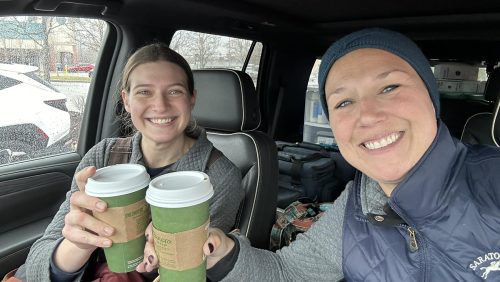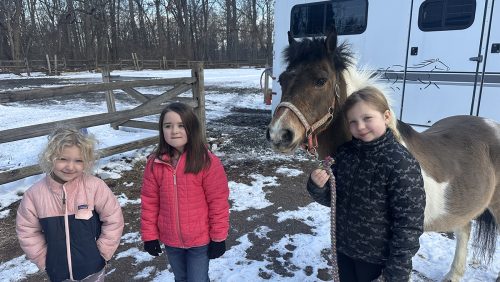Not showing at the Upperville Horse Show (Va.) this year was a victory. It meant one thing; that I’d sold the horses that were ready to compete at 1.0-meter and above. And that’s the point of this exercise, right? But as I stood on the sidelines, I couldn’t help but be bummed that I wasn’t galloping around the grassy ring. Success can sometimes mean sitting out some shows.
Selling horses is both exciting and stressful, but once everything’s said and done there’s a bit of a slump that accompanies starting up the next batch of greenies. I jokingly call it the “Baby Horse Blues.” Because, yes, the newbies could be the next Donner or Touch Of Class, but in the beginning, riding them around at a show feels a lot like rowing a leaky boat across the Atlantic. I find that I have to recalibrate my riding whenever I start a new horse. I have to remind myself to ride this horse on this day and not get hung up comparing new horses to sold horses. And that’s not easy.
An early phase of the baby horse blues is what I call “the abandonment of ego.” It happens, whether you want it to or not. You’d gotten pretty comfortable; riding around on something reasonably broke in public. You’d even been able to stand still at the in-gate to learn a course. You hadn’t unintentionally cleared a warm-up area in at least a month. And then the natural thing happens, the right customer meets this well-tamed creature that you’d become so fond of and buys him. And you, the picture of sophistication (his mane had even started to lay down on the right side of his neck!) are jolted unceremoniously back into the unplanned dressage movement, romping ridiculousness of baby horse blues. Show reports change from, “great trips, bringing home primary colored ribbons!” to “kept all four feet on the ground.” Humility is an undervalued trait in riding. If you ever feel you’re lacking it, just take a baby thoroughbred to his first public outing.
And this is not for lack of preparation. Don’t think that I just go out and throw the kids in the deep end of the pool without a few rudimentary swimming lessons. Those early lessons, frequent field trips and daily training help prepare the young horses for the busy show environment. But nothing compares to the warm-up area at Culpeper during the Level 0s and 1s. Because, the heck with the deep end of the pool, you’re chucking the kids out in the open ocean with 30 or so others just learning to swim themselves.
So how do they go from kangaroo-hopping, trembling time bombs to child-safe mounts? Simple, practice. Lots and lots of practice. Make mayhem their new normal. The next phase of the baby horse blues is “going and doing.” The only way to teach them to go and do is to go and do. And yes, leave your ego behind. People underestimate just how much time and sweat equity goes into civilizing these horses. It’s not about having the nicest, fanciest facility or the biggest show budget; it’s about devoting the time and energy to make it happen. Most of the fundamental off-the-reservation training takes place not in the show ring, but in the warm-up ring. That’s where they really learn to exist at a horse show. That’s where they get broke.
ADVERTISEMENT
Generally, my horses don’t show on their first outing. They go along for the ride and learn how to function in the show environment without the added pressure of competition. And taking that pressure away is key to their success. The only way to teach them to take a breath and relax in a stressful situation is if you can do it yourself. That might mean not competing.
If you’re devoted to the success of your young horse, you know that sitting out this show and focusing on the basics will better prepare him to compete at his next outing. I spent a thrilling four days at HITS Culpeper (Va.) this spring on a horse that couldn’t trot. In the beginning of the week he had two speeds—stationary trembling and romping. He was totally overwhelmed by the environment. Yes, I could have longed him into exhaustion, but that’s not training. Don’t get me wrong, longeing has its place. But this horse wasn’t wild; he was terrified, so making him tired wasn’t the answer. Four days of methodical training in the ticketed warm-up area was. And no, he wasn’t perfect at his next show, but he could trot. And the show after that, he laid down a double-clear round at the Loudoun Benefit in the .95-meter class and walked around the grounds flat-footed. A week late for Upperville, but a huge accomplishment for my baby horse. I walked out of the ring grinning; I could see the baby horse blues ebbing away.
Hunter/jumper trainer Paige Cade works at Tebogo Sport Horses, a facility in Delaplane, Va., devoted to the re-training and sales of off-the-track Thoroughbreds.















